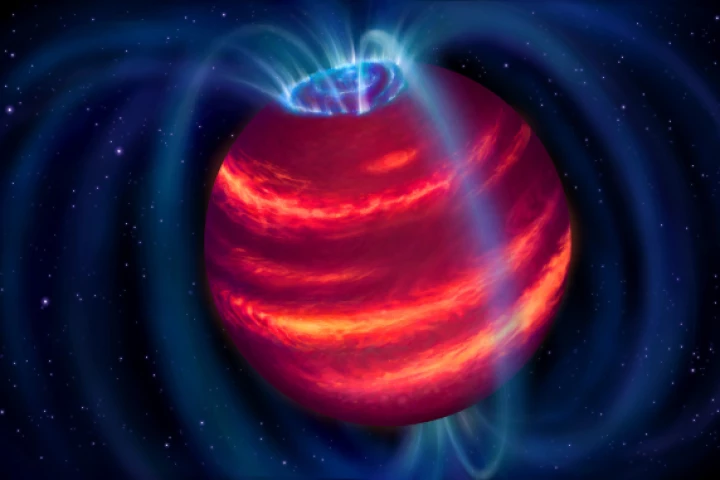Brown dwarf
-
What was once thought to be just one star is actually two. What's more, the two stars are so close that they've broken a record for being the tightest ultracool binary system ever observed, revolving around each other in less than an Earth day.
-
Scientists in Europe and Hawaii have scored a world's first by detecting a "super-planet," also known as a cold brown dwarf, using a radio telescope. Located 212 light-years away, BDR J1750+3809 may help in the search for habitable exoplanets.
-
Using polarized light, astronomers have detected signs of cloud bands in the atmosphere of a brown dwarf far beyond the solar system. It turns out that these gassy giants have a similar appearance to Jupiter, and the same kind of wild weather.
-
Astronomers have discovered a rare superflare more powerful than anything observed on our Sun in modern times, erupting from a small, cold star roughly the size of the planet Jupiter.
-
Strange celestial objects known as brown dwarfs could be classed as either the largest possible planets or the smallest possible stars. Now astronomers from Heidelberg University have found evidence of brown dwarfs forming like planets, as opposed to stars.
-
A brown dwarf was recently downgraded to planet status (albeit a huge one), and now astronomers have discovered that it generates an enormous magnetic field, which could provide a new tool in the search for exoplanets.
-
About 70,000 years ago, an interstellar interloper brushed past less than a light-year from us. A new study has found that the effects of this close encounter are still felt today, as the orbits of hundreds of comets and asteroids still bear the star’s gravitational influence.
-
You might have a pretty clear mental picture of what a planet is, but the official definition is surprisingly contentious. Now, an astrophysicist from Johns Hopkins University has proposed a revision to the definition of a planet, to help differentiate gas giants from brown dwarfs.
-
When you're dealing with astronomical bodies that are light years away from you, sometimes classifications can be tricky. That seems to be the case with SIMP0136, an object located in a 200-million-year-old group of stars called Carina-Near.
-
A team of astronomers making use of data collected by NASA's Kepler telescope has spotted a leviathan storm raging on the surface of a tiny, distant star.
-
The discovery of a powerful aurora surrounding a distant failed star may in future aid astronomers in their hunt for habitable planets. The technique used to observe the phenomenon could one day be a factor in determining whether a planet could sustain life.
-
An international team of astronomers from the US, Europe, Chile, and South Africa have identified a star system that most likely passed through the outer edge of our solar system at a distance of 0.8 light years some 70,000 years ago.
Load More











